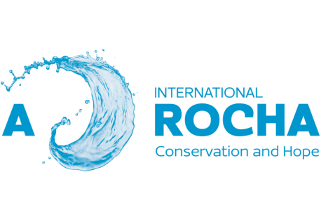A day in the life of a Florida marine intern
Dr Robert Sluka leads A Rocha’s Marine Conservation programme from his home in Florida. Interns help with work studying local marine biodiversity, plastic pollution and exploring the benefits of nature for health and wellbeing.
 ‘“My son says the surf is good tomorrow – so we will start the day at the beach,” I say to the two interns staying with us. Needs must. Learning about marine conservation isn’t all days at the beach, but in Florida it often is. Our house serves as a de facto A Rocha centre, so family life often combines with work – if you stay overnight, you get to paint your hand on the wall. We head to Playalinda, hoping to arrive before sunrise. While my son surfs, we nurdle hunt, searching for these plastic pellets at the base of the plastic system, collecting data for our study on microplastics at Canaveral National Seashore while remembering the rumble and fire of a rocket launch a few days previous. We stop at Parrish Park, Florida’s most important Horseshoe Crab nesting site, where we visit local legend Laurilee Thompson. Laurilee is a marine conservation advocate and leading local efforts – along with the University of Florida and Florida Fish and Wildlife Conservation Commission – to protect and study this important area. We take a data sheet and start looking for tagged Horseshoe Crabs.
‘“My son says the surf is good tomorrow – so we will start the day at the beach,” I say to the two interns staying with us. Needs must. Learning about marine conservation isn’t all days at the beach, but in Florida it often is. Our house serves as a de facto A Rocha centre, so family life often combines with work – if you stay overnight, you get to paint your hand on the wall. We head to Playalinda, hoping to arrive before sunrise. While my son surfs, we nurdle hunt, searching for these plastic pellets at the base of the plastic system, collecting data for our study on microplastics at Canaveral National Seashore while remembering the rumble and fire of a rocket launch a few days previous. We stop at Parrish Park, Florida’s most important Horseshoe Crab nesting site, where we visit local legend Laurilee Thompson. Laurilee is a marine conservation advocate and leading local efforts – along with the University of Florida and Florida Fish and Wildlife Conservation Commission – to protect and study this important area. We take a data sheet and start looking for tagged Horseshoe Crabs.
The afternoon is spent eating, resting and reading on the back porch, with a quick dip in the pool to cool off. We discuss papers on sandy beach habitats and articles on creation care as we drive to catch the sunset kayaking in the Indian River Lagoon, hoping to catch sight of a manatee or a dolphin. As night falls, the stars shine in the darkness and the bioluminescence in the water makes our wake glow.’
Read more about A Rocha’s marine work in Florida.

